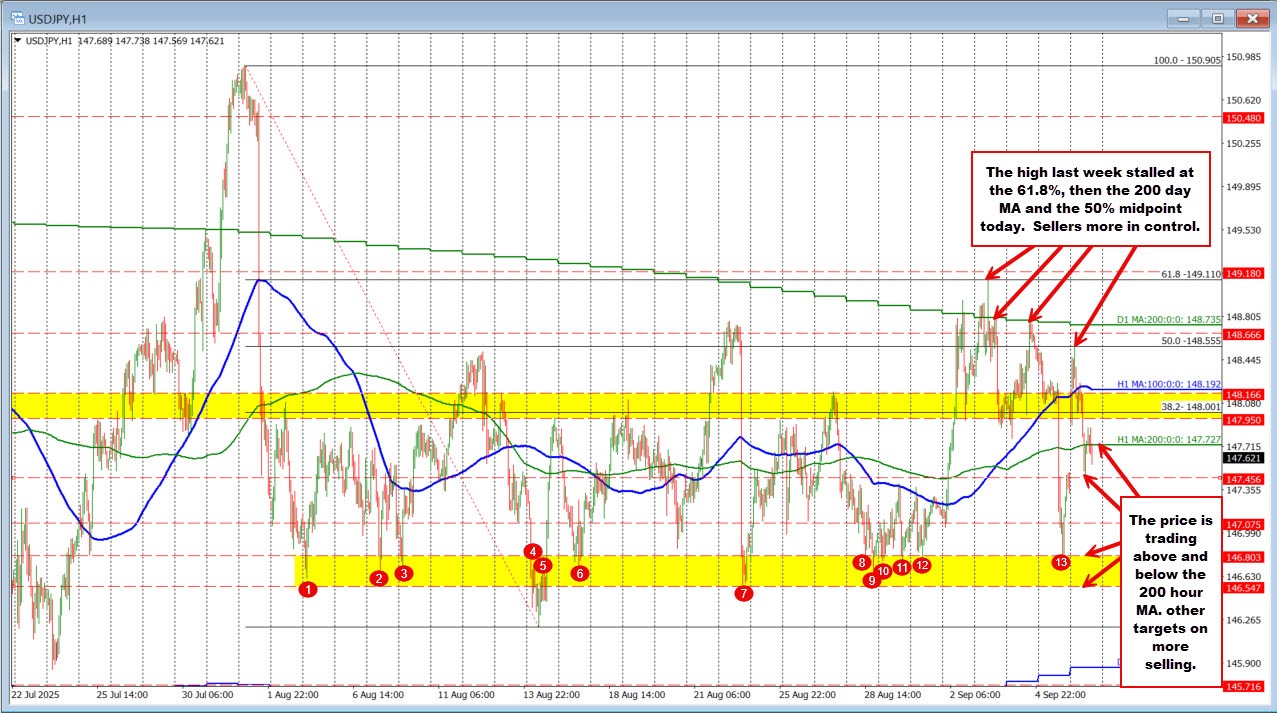
The USDJPY surged in early trading following the resignation of Japan’s Prime Minister Ishiba over the weekend. From Friday’s close at 147.382, the pair spiked higher in the Asian session, reaching a peak of 148.57—just above the 50% midpoint of the range defined since the August 1 high (148.555). However, momentum could not be sustained.
That rally was quickly unwound, with the pair sliding to a European morning low of 147.457, pushing briefly below the 200-hour moving average at 147.727. Over the past several hours, price action has stabilized but remains choppy, with the pair oscillating above and below this key long-term average as traders digest two competing forces: Friday’s sharp downside move driven by a weak U.S. jobs report, and the weekend’s political shock from Ishiba’s resignation, which initially fueled strong yen selling.
What’s next?
From a broader perspective, buyers managed last week to push USDJPY above its 200-day moving average at 148.735 (highest green line on the on the chart above) on Tuesday and Wednesday. However, momentum stalled after failing against the 61.8% retracement at 149.110 on Wednesday. Sellers then leaned against the 200-day moving average late Wednesday and again Thursday, before Friday’s sharp drop (on the jobs report). Today’s high came in below Thursday’s peak and also stalled near the 50% midpoint, reinforcing bearish control and giving sellers the green light to press lower.
So, sellers leaned first against 61.8% retracement, then the lower 200-day moving average and then the lower 50% midpoint. That gives the sellers control.
For buyers to regain momentum, it would take a move back above the 147.95–148.166 swing area, followed by a break of the falling 100-hour moving average at 148.192. Clearing those levels would shift the bias back to the upside. Absent that, the tilt remains to the downside, with a break below today’s low (at 147.45) opening the path toward 147.075, and further down to the 146.54–146.80 swing area.



